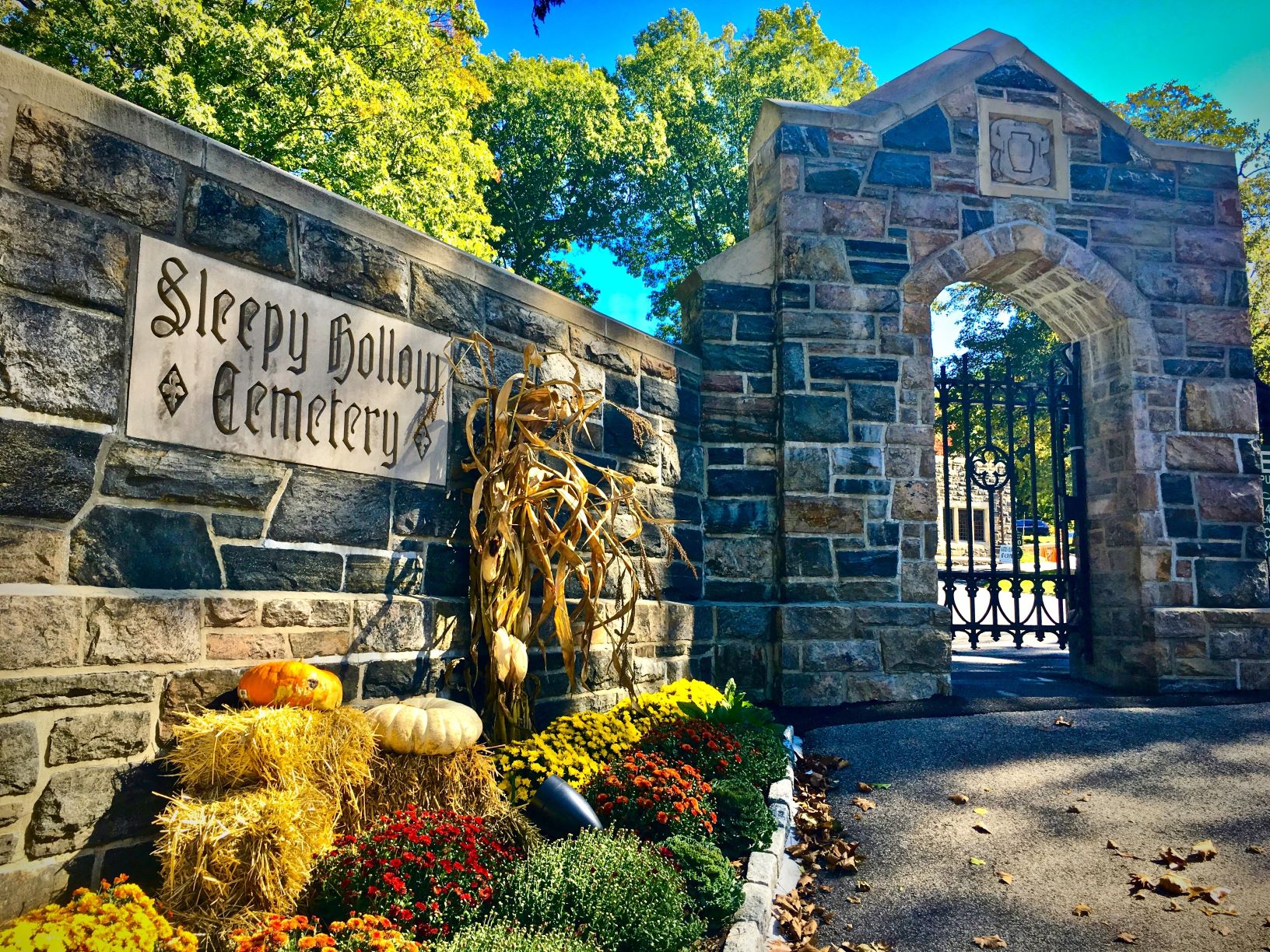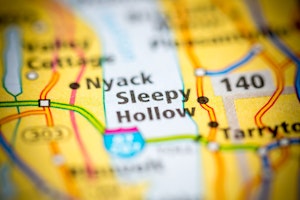Considered by many to be a favorite scary story for Halloween parties or around a bonfire on a chilly fall night, The Legend of Sleepy Hollow by Washington Irving has a blend of fiction and historical fact that makes it one of the best-known short stories of American literature.
Irving brilliantly weaved details of real people and places into fictional ones that came to life in the story. And in a perfect case of life imitating art, in 1996 the village in North Tarrytown used as the setting in the 200 year-old story officially adopted the name Sleepy Hollow.
As a refresher for those who haven’t heard or read it recently, the story takes place in the late 1700s in the very quiet town of Sleepy Hollow. School teacher Ichabod Crane settles there from Connecticut and finds himself at odds with a local, Abraham “Brom Bones” Van Brunt. over a woman named Katrina Van Tassel. One night after leaving a party at Katrina’s home, Ichabod encounters the Headless Horseman, the ghost of a soldier who was decapitated by a cannonball during the Revolutionary War and now haunts the area on his search for his head. After Ichabod is chased by the horseman and has his head thrown at him, he is never seen or heard from again.
Here are some fun facts about The Legend of Sleepy Hollow that perhaps could be spun into a trivia game along with telling the tale:
- The fictional town of Sleepy Hollow was located in New York’s Hudson River Valley near the real Tarrytown.
- The character Ichabod Crane was named after a career military man who served in the War of 1812, whom Irving met at Fort Pike in Sacket’s Harbor, NY in 1814.
- However, the fictional Ichabod Crane’s mannerisms and behavior were inspired by a one of Irving’s friends from Kinderhook, NY, a teacher by the name of Jesse Merwin.
- Brom Bones was a composite of two people that Irving knew – village blacksmith Abraham Martling and his son, also named Abraham, who was the village cobbler. Brom was derived from Abraham, and Bones was believed to be the nickname the blacksmith used for his skinny son.
- The Headless Horseman is based on a Hessian soldier who was said to have been beheaded during the Battle of White Plains. The Hessians were German soldiers hired by the British Crown to fight the American colonists in the Revolutionary War.
- There’s a German legend of the Headless Horseman that is said to have influenced the folklore of the Dutch, who inhabited the Hudson Valley and whose culture and traditions are found throughout Irving’s story.
- Some of the names from the story, including Katrina Van Tassel, can be found on tombstones in the cemetery that grew around the Old Dutch Church in Sleep Hollow.
- Washington Irving is buried in the Sleepy Hollow Cemetery, as well as other famous names such as Andrew Carnegie, Walter P. Chrysler and Elizabeth Arden.

